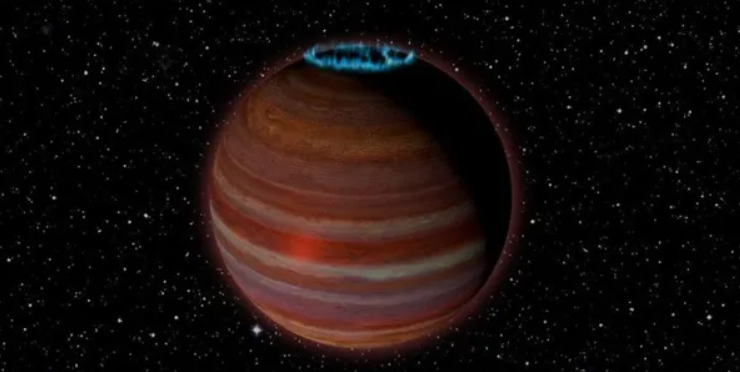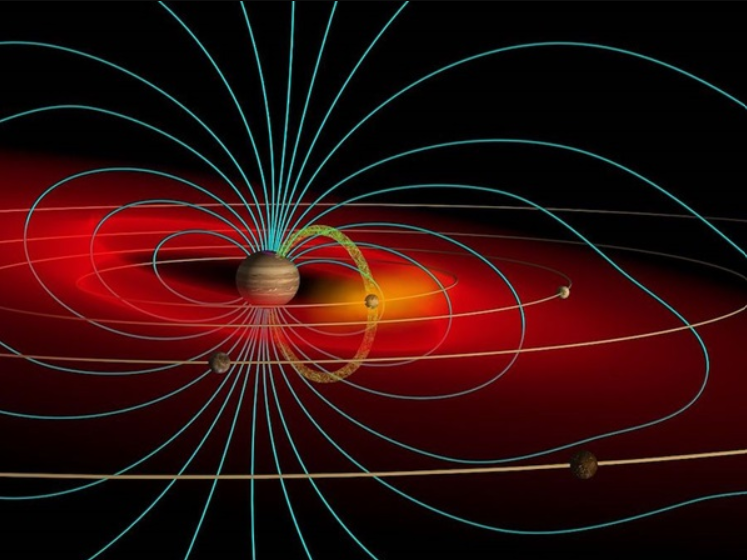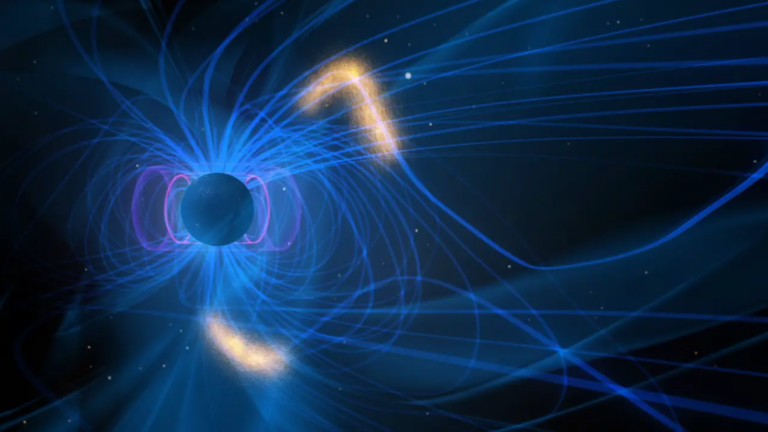
A unique and mysterious planet, untethered to any star, meanders through the vast expanse of the Milky Way, a mere 20 light-years away from our Sun. Recently unveiled in The Astrophysical Journal, this enigmatic wanderer possesses an incredibly powerful magnetic field, surpassing Earth’s by a staggering 4 million times. Astonishingly, this exoplanet also showcases breathtaking auroras that outshine even our own mesmerizing northern lights.
These groundbreaking findings, made possible by the National Science Foundation’s Karl G. Jansky Very Large Array (VLA), not only represent the first-ever radio observations of a planet-sized entity outside our solar system but also mark a significant milestone in measuring the magnetic field of such a celestial body.
Examining SIMP
The peculiar and detached entity, SIMP J01365663+0933473 (hereafter referred to as SIMP for convenience), was first discovered in 2016. Initially categorized as a brown dwarf, a celestial object too large to be a planet yet too small to be a star, subsequent research in the previous year revealed that SIMP, with a mass equivalent to 12.7 times that of Jupiter and a radius 1.2 times larger, qualifies as a planet—albeit an enormous one.
Melodie Kao, leading the recent study on SIMP at Arizona State University, stated, “This object straddles the line between a planet and a brown dwarf, or a ‘failed star,’ and presents unexpected findings that could potentially enhance our understanding of magnetic phenomena on both stars and planets.”
SIMP boasts a rather high temperature for a planet, exceeding 1,500 degrees Fahrenheit (825 Celsius). To put it into perspective, Venus, the hottest planet in our solar system, maintains an average temperature of approximately 875 F (470 C), while the Sun, a relatively modest and cool star, has a surface temperature of about 10,000 F (5,500 C). However, it is important to note that Venus primarily receives its heat from the Sun. In contrast, since SIMP does not orbit a star, its warmth must originate from its initial formation around 200 million years ago. As a result, this colossal planet will gradually lose its heat over time.
Unmatched Magnetism
The most recent study reveals that SIMP not only possesses immense proportions compared to other planets but also has a magnetic field that is millions of times stronger than Earth’s. This powerful magnetic field contributes to the breathtaking light displays observed on SIMP, although the auroras manifest in a different manner compared to those on Earth.
Among all the planets in our solar system, Jupiter boasts the most powerful magnetic field, which is nearly 20,000 times stronger than Earth’s. This results in the formation of incredibly bright auroras. These stunning phenomena occur when electrically charged particles accelerate along Jupiter’s magnetic field lines, colliding with atoms in the planet’s upper atmosphere at speeds of approximately 3,000 miles (5,000 kilometers) per second.
On Earth, a similar process gives rise to the northern and southern lights, with the charged particles responsible for our auroras primarily originating from the Sun in the form of solar wind. However, on Jupiter, these particles mainly come from its moon Io rather than the solar wind. Since SIMP lacks a star bombarding it with solar wind like Earth, scientists suggest that SIMP’s auroras may resemble those of Jupiter’s, indicating the possibility of a moon’s presence.
Magnetic Revelation

To summarize: SIMP is an enormous, magnetic exoplanet that is drifting through space without a star. It is believed to possibly have a moon and is known for creating stunning auroras as it travels through the Milky Way.
This discovery is truly impressive. But what does it mean for astronomers and their understanding of the universe?
According to Kao, this particular entity is captivating because studying its magnetic dynamo mechanisms can provide valuable insights into how similar mechanisms work in planets outside of our solar system. It is believed that these mechanisms can operate not only in brown dwarfs, but also in gas giant and terrestrial planets.
In essence, SIMP has the potential to enhance astronomers’ understanding of how magnetic fields are generated in exoplanets. But there’s even more to it!
Co-author Gregg Hallinan of Caltech pointed out that detecting SIMP J01365663+0933473 through its auroral radio emission using the VLA suggests that we may have a new method for detecting exoplanets, including those that are rogue and not orbiting a parent star.
Therefore, SIMP is not only an incredibly fascinating entity on its own, but it also opens up possibilities for future discoveries and insights into exoplanetary magnetic fields and auroras. It helps in the search for exoplanets that prefer to exist in solitude.
Do not forget to share your opinion with us to provide you with the best posts !




0 Comments